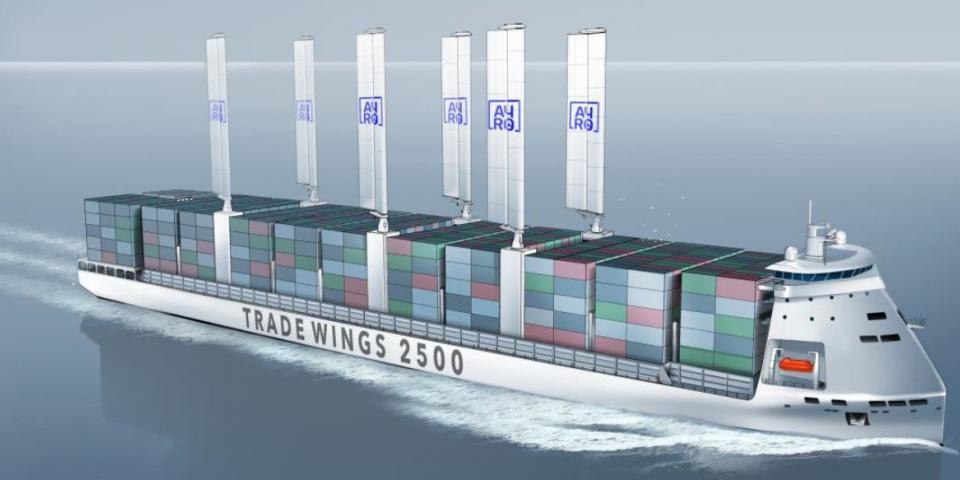Four firms have teamed up to create a new 2,500 TEU container vessel that features a combination of wind-assisted propulsion and LNG-electric power.
Three French firms, namely VPLP Design, Alwena Shipping, and AYRO joined forces with China’s SDARI on the concept named Trade Wings 2,500, according to Bureau Veritas.
After reviewing the key drawings of the vessel, BV granted an approval in principle to the ships’ basic design, the Paris-based classification society said on Monday.
With an overall length of 197m and a breadth of 32m, the vessel offers a deadweight of 32,500 m tons.
It fosters the combination of wind-assisted propulsion featuring six Oceanwings with LNG-electric propulsion with pods, BV said.
The wingsails are installed on a vertical sliding mechanism to retract them partially while the vessel is in port, thus minimizing the impact on cargo operations.
In addition, the vessel will feature GTT’s Mark III containment system and the LNG power plant will have pure gas 4-strokes gensets only.
“This architecture is a flexible platform offering possible upgrade to decarbonated fuels in the future such as ammonia or hydrogen,” BV said.
Short sea shipping ops
Suitable to short sea shipping operations or feedering in Europe, Central America, Caribbean Islands and China, the Trade Wings 2,500 can also operate on transatlantic trades.
“The design minimizes time in port operations, as maneuverability is increased with the pods, and the hatch coverless design further speeds up cargo operations,” BV said.
On a typical transatlantic route of 4,000 Nm, the Trade Wings 2,500 would save on average 35% CO2-equivalent emissions compared to a conventional design, with a 2-stroke engine, single shaft and without wingsails, at the same speed, according to BV.
Out of these 35% savings, the Oceanwings accounts to 57%, the optimized LNG thermal propulsion delivering the remaining 43% savings, it said.
“This co-work to design the Trade Wings 2,500 sets the pathway for what could be the low emissions container vessels of the near future,” the classification society said.

